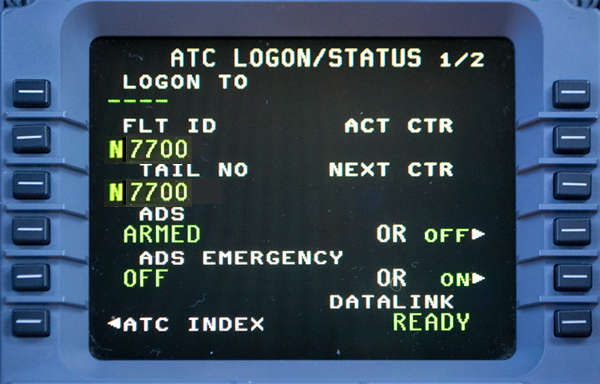I think of Automatic Dependent Surveillance - Contract (ADS-C) as a replacement for Air Traffic Control's radar contact. When you have logged on to an Air Traffic Service Unit with ADS-C, you have agreed to contracts which send information to the ATSU, such as your position, on a regular basis.
— James Albright

Updated:
2020-12-17
It is a part of the data link system that keeps you on the same page as Air Traffic Control.
5 — Automatic transfer of CPDLC and ADS-C services between ATS units

1
Functional description
- ADS-C uses various systems on board the aircraft to automatically provide aircraft position, altitude, speed, intent and meteorological data, which can be sent in a report to an ATS unit or AOC facility ground system for surveillance and route conformance monitoring.
- One or more reports are generated in response to an ADS contract, which is requested by the ground system. An ADS contract identifies the types of information and the conditions under which reports are to be sent by the aircraft. Some types of information are included in every report, while other types are provided only if specified in the ADS contract request. The aircraft can also send unsolicited ADS-C emergency reports to any ATS unit that has an ADS connection with the aircraft.
- An ATS unit system may request multiple simultaneous ADS contracts to a single aircraft, including one periodic and one event contract, which may be supplemented by any number of demand contracts. Up to five separate ground systems may request ADS contracts with a single aircraft.
Note.— Although the terms are similar, ADS-C and ADS-B are two different applications. In comparison, ADS-B (PSR, SSR or any comparable ground-based system that enables the identification of aircraft) is an ATS surveillance system. An ADS-B-capable aircraft supports ATS surveillance services and broadcasts information at a relatively high rate, and any appropriate receiver on the ground or in another aircraft within range can receive the information.
Source: ICAO Doc 10037, ¶1.2.5
ADS-C gives you a better Required Surveillance Performance (RSP) and CPDLC gives you better Required Communication Performance (RCP). Combined, they allow you to fly in airspace with tighter separation minima which means you have a greater selection of airspace available to you.
2
Contracts
An ADS Contract is an agreement from you, the pilot, to the Air Traffic Service (ATS), to provide information. You can provide information through various types of contracts and you can do this with up to four different ATS providers. The data is extracted automatically from various electronics in your aircraft. In exchange they grant you access to the airspace you are in, or coordinate with nearby airspace. ADS-C will take the place of voice position reports in many regions of the world. You need special equipment and authorization to use ADS-C.
Automatic Dependent Surveillance—Contract (ADS-C) (ICAO). A means by which the terms of an ADS-C agreement will be exchanged between the ground system and the aircraft, via a data link, specifying under what conditions ADS-C reports would be initiated and what data would be contained in the reports. The abbreviated term “ADS contract” is commonly used to refer to ADS event contract, ADS demand contract, ADS periodic contract, or an emergency mode.
Source: AC 91-70B, ¶A.2.16.2
- After receiving a logon request, the ATS unit will need to establish ADS contract(s) with the aircraft before it can receive any ADS-C reports. There are three types of ADS contracts:
- periodic contract;
- demand contract; and
- event contract.
- The ground system can establish ADS contracts without flight crew action provided that ADS-C in the aircraft system is not selected off. The flight crew has the ability to cancel all contracts by selecting ADS-C off and some aircraft systems allow the flight crew to cancel an ADS contract with a specific ATS unit.
Source: ICAO Doc 10037, ¶1.2.5.3
Periodic Contracts
- A periodic contract allows an ATS unit to specify:
- the time interval at which the aircraft system sends an ADS-C report; and
- the optional ADS-C groups that are to be included in the periodic report. Each optional group may have a unique modulus which defines how often the optional group is included with the periodic report (e.g. a modulus of five indicates that the optional group would be included with every fifth periodic report sent).
- The range and resolution of the time interval parameter in the periodic contract allows for an interval to be specified between 1 second and 4,096 seconds (approximately 68 minutes). However, RTCA DO-258A/EUROCAE ED-100A limits the minimum interval to 64 seconds. If the ground system specifies a time interval less than 64 seconds, the aircraft system will respond with a non-compliance notification and establish a periodic contract with a 64-second reporting interval. If the ground system does not specify a time interval, the aircraft will establish a periodic contract of 64 seconds for emergency periodic reporting and 304 seconds for normal periodic reporting.
- The ground system may permit the controller to alter the periodic reporting interval to allow for situations where the controller desires a longer or shorter reporting interval. The controller may select a shorter reporting interval to obtain more frequent surveillance information, for example, during an off-route deviation or an emergency.
- An ATS unit can establish only one periodic contract with an aircraft at any one time. A number of ATS units can each establish their own periodic contract and specify their own conditions for the report with the same aircraft at the same time.
- A periodic contract remains in place until it is either cancelled or modified. Whenever an ATS unit establishes a new periodic contract, the aircraft system automatically replaces the previous periodic contract with the new one.
Note.— ADS-C groups are referred to as data blocks in ICAO Doc 4444.
Note.— The ANSP ensures that separation minima are applied in accordance with appropriate standards. The ground system may prevent the controller from selecting a periodic reporting interval that is longer than the maximum interval specified in the standard for the separation minima being applied.
Source: ICAO Doc 10037, ¶1.2.5.3
Demand Contracts
A demand contract allows an ATS unit to request a single ADS-C periodic report. A demand contract does not cancel or modify any other ADS contracts that may be in effect with the aircraft.
Source: ICAO Doc 10037, ¶1.2.5.3.4
Event Contracts
- An event contract allows an ATS unit to request an ADS-C report whenever a specific event occurs. An ATS unit can establish only one event contract with an aircraft at any one time. However, the event contract can contain multiple event types as follows:
- waypoint change event (WCE);
- level range deviation event (LRDE);
- lateral deviation event (LDE); and
- vertical rate change event (VRE).
Note.— In accordance with ICAO Doc 4444, paragraph 13.4.3.4.3.2, in airspace where procedural separation is being applied, as a minimum, WCE, LRDE, and LDE shall be contained in ADS-C agreements.
Source: ICAO Doc 10037, ¶1.2.5.3.6.
In the example photo, the ATS will be notified automatically if the aircraft's vertical velocity exceeds 5,056 fpm, lateral deviation exceeds 5 nm, the altitude goes below 40,700 or above 41,300 feet, and at every waypoint change. The waypoint change is determined by the FMS so anything you do to the FMS that affects the next waypoint and the waypoint one after that will be reported. For example, you you were to insert your ETP before the next waypoint, that gets reported.
3
Log on
In my Gulfstream the ADS-C log on happens automatically as a function of the CPDLC log on. I'm not sure if that is the case with other aircraft but it is with mine. For more about this see: CPDLC.
4
Position reporting
When using CPDLC to provide position information, the flight crew should report unnamed waypoints (latitudes/longitudes) using the ICAO format of nn[N/S]nnn[E/W] or, if both degrees and minutes are required, nnnn[N/S]nnnnn[E/W].
Note.— The flight crew and flight operations officers/dispatchers should not use the ARINC 424 format. ARINC 424 describes a 5-character latitude/longitude format for aircraft navigation databases (e.g. 10N40 describes a lat/long of 10N140W). The ATS unit may reject or be unable to process any downlink message containing waypoint names in the ARINC 424 format.
Source: ICAO Doc 10037, ¶4.4.6.1.1
Position reporting in a non-ADS-C environment
- When ADS-C is not available, the flight crew should conduct position reporting by voice or CPDLC. When using CPDLC, the flight crew should send RTED-5 POSITION REPORT (position report) whenever an ATC waypoint is sequenced, (or passed abeam when offset flight is in progress).
- When using CPDLC for position reporting, the flight crew should send position reports only at compulsory reporting points and ensure that the position and next position information applies to compulsory reporting points, unless requested otherwise by ATC. The ensuing significant point after the next position may be either a compulsory or non-compulsory reporting point (refer AIREP form ICAO Doc 4444, Appendix 1).
Source: ICAO Doc 10037, ¶4.4.6.1
Position reporting in an ADS-C environment
- If required by regional supplementary procedures or AIP (or other appropriate publication), the flight crew should provide a CPDLC position report when either of the following events occurs:
- an initial CPDLC connection is established; or
- the CPDLC connection transfer has been completed (i.e. at the associated boundary entry position).
Note.— In an ADS-C environment, the flight crew should not provide position reports or revised waypoint estimates by CPDLC or voice, unless otherwise instructed or under conditions in certain airspace as stipulated in AIP (or other appropriate publication)
Note.— Some ANSPs require a single CPDLC position report, even when in an ADS-C environment, to provide the controlling ATS unit confirmation that it is the CDA and the only ATS unit able to communicate with the aircraft via CPDLC (refer to Appendix B).
Source: ICAO Doc 10037, ¶4.4.6.3
In general you should not provide position reports or revised waypoint estimates by CPDLC or voice unless you see something that tells you to do so. Append B can be misleading. The subject is only brought up in the North Atlantic region where you are explicitly told "For ADS-C flights, the flight crew should not submit position reports via voice to reduce frequency congestion, unless requested by aeronautical radio operator." Makes sense, but don't let that talk you into thinking now you need to do so in other regions because the same phrase is missing.
- The flight crew should include only ATC waypoints in cleared segments of the aircraft active flight plan. However, when an ATC clearance eliminates a waypoint, it is permissible to retain and report the point abeam of that waypoint since this ensures retention of meteorological data associated with the eliminated waypoint.
- The flight crew should maintain the active route in the aircraft system to be the same as the ATC cleared route of flight.
- When reporting by ADS-C only, the flight crew should include ATC waypoints in the aircraft active flight plan even if they are not compulsory reporting points.
Note.— If the flight crew inserts non-ATC waypoints (e.g. mid-points) into the aircraft active flight plan and activates the change, the aircraft system may trigger an ADS-C waypoint change event report at the non-ATC waypoint, or include information about the non-ATC waypoint in the predicted route group, as well as the intermediate and fixed projected intent groups. As a result, the ADS-C report will include information about the non-ATC waypoint, which is not expected by the ATC ground system.
Note.— If the flight crew activates a non-ATC cleared route into the aircraft system, the ADS-C reports will include information that will indicate the aircraft is flying a route that is deviating from the cleared route.
Source: ICAO Doc 10037, ¶4.4.6.3
The importance of FMS waypoint sequencing
You don't have to worry about flying a Strategic Lateral Offset because your FMS will sequence the waypoints even if your are two miles away from the intended course. But if you are further than the tolerance allowed by your FMS, it may not sequence. If that happens, the position report will not be made.

Waypoint sequencing anomaly, from ICAO Doc 10037, figure 4-6.
- The flight crew should ensure that waypoints are sequenced correctly. If an aircraft passes abeam a waypoint by more than the aircraft FMS waypoint sequencing parameter, the flight crew should sequence the waypoints in the FMS, as appropriate.
As shown in [the figure], when an aircraft passes abeam a waypoint in excess of the defined sequencing parameter (refer to , paragraph F.7) for specific aircraft types), the FMS will not sequence the active waypoint. If the flight crew does not sequence the waypoint, incorrect information will be contained in ADS-C reports, CPDLC position reports and FMC waypoint position reports – the next waypoint in these reports will actually be the waypoint that the aircraft has already passed.
Source: ICAO Doc 10037, ¶4.5.1.6
5
Automatic transfer of CPDLC and ADS-C services between ATS units
- Under normal circumstances, the current and next ATS units automatically transfer CPDLC and ADS-C services. The transfer is seamless to the flight crew.
- The flight crew should promptly respond to CPDLC uplink messages to minimize the risk of an open CPDLC uplink message when transferring to the next ATS unit.
- Prior to the point at which the current ATS unit will transfer CPDLC and/or ADS-C services, the flight crew may receive an instruction to close any open CPDLC messages.
- When entering the next ATS unit’s airspace, the flight crew should confirm the successful transfer from the current ATS unit to the next ATS unit by observing the change in the active ATS unit indication provided by the aircraft system.
- When required by local procedures, the flight crew should send RTED-5 POSITION REPORT (position report). Alternatively, the flight crew may be required to respond to a CPDLC message exchange initiated by the ATS unit.
Note.— The flight crew should not need to reinitiate a logon.
Note.— If a flight is transferred to a new ATS unit with an open CPDLC message, the message status will change to ABORTED. If the flight crew has not yet received a response from the controller, the downlink request will also display the ABORTED status. Refer also to Appendix C, paragraph C.8.
Source: ICAO Doc 10037, ¶4.2.3.
6
Exiting CPDLC and ADS-C areas
- Approximately 15 minutes after exiting CPDLC and/or ADS-C areas, the flight crew should ensure there are no active CPDLC or ADS-C connections. Ensuring that connections are not active eliminates the possibility of inadvertent or inappropriate use of the connections.
- The flight crew should consult the current ATS unit prior to the manual termination of any ADS contract, even if it is suspected to be unnecessary or that its termination has failed.
- In the event that the connection termination has failed, the flight crew should contact the ATS unit via voice or any other appropriate means.
Source: ICAO Doc 10037, ¶4.2.5
7
ADS-C reports
The aircraft system sends specific aircraft data in different groups of an ADS-C report. Each group contains different types of data. An ADS-C event report contains only some of the groups, which are fixed. The ADS-C periodic report can contain any of the ADS-C groups, which the ATSU specifies in the contract request.
Source: ICAO Doc 10037, ¶1.2.5.4.1
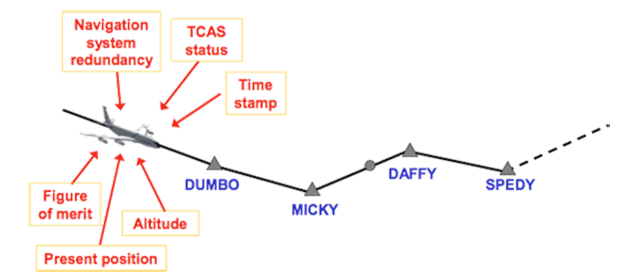
ADS-C Basic Group, from ICAO Doc 10037, figure 1-39

ADS-C Basic Group, from ICAO Doc 10037, figure 1-40

ADS-C Basic Group, from ICAO Doc 10037, figure 1-41

ADS-C Basic Group, from ICAO Doc 10037, figure 1-42

ADS-C Basic Group, from ICAO Doc 10037, figure 1-43
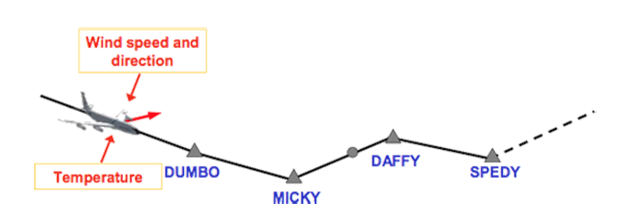
ADS-C Basic Group, from ICAO Doc 10037, figure 1-44
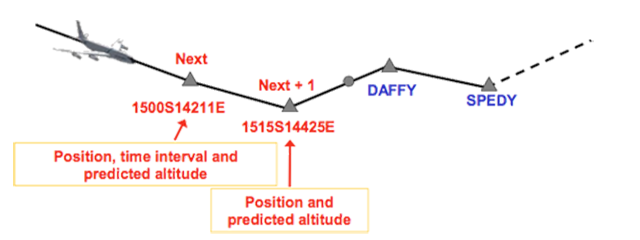
ADS-C Basic Group, from ICAO Doc 10037, figure 1-45
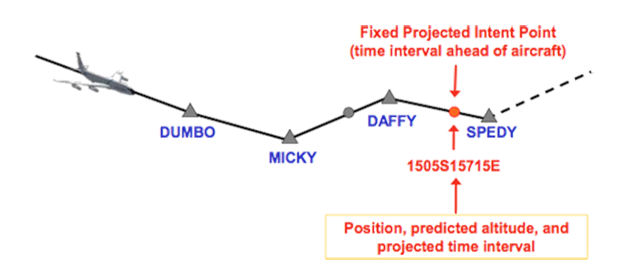
ADS-C Basic Group, from ICAO Doc 10037, figure 1-46
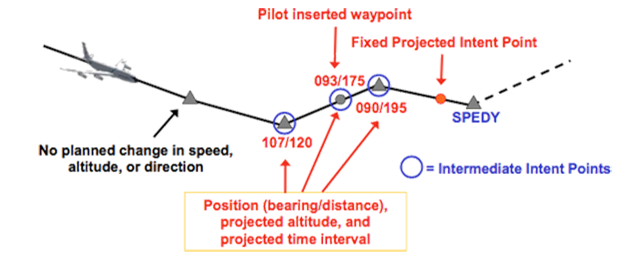
ADS-C Basic Group, from ICAO Doc 10037, figure 1-47
References
(Source material)
ICAO Document 10037 - Global Operational Data Link (GOLD) Manual, First Edition, 2017
Advisory Circular 91-70B, Oceanic and International Operations, 10/4/16, U.S. Department of Transportation
Asia/Pacific Information Package, FAA Flight Technologies and Procedures Division (AFS-400), June 15, 2012
FANS-1/A Operations Manual, FAA Aeronautical Communications Aviation Safety (AVS), Version 6.0, 25 September 2008
Guidance Material for ATS Data Link Services in NAT Airspace, The North Atlantic FANS Implementation Group (NAT FIG), The North Atlantic Systems Planning Group (NAT SPG), Version 19.1, 14 September 2009
Gulfstream G450 Aircraft Operating Manual, Revision 35, April 30, 2013.
Gulfstream G450 Airplane Flight Manual, Revision 35, April 18, 2013
Gulfstream Operating Manual Supplement for G350, G450, G500, and G550 Airplanes, Supplement Number GAC-OMS-4, Future Air Navigation System (FANS 1/A), Automatic Dependent Surveillance (ADS-C), Controller Pilot Data Link Communications (CPDLC), Revision 1, July 1, 2012
Please note: Gulfstream Aerospace Corporation has no affiliation or connection whatsoever with this website, and Gulfstream does not review, endorse, or approve any of the content included on the site. As a result, Gulfstream is not responsible or liable for your use of any materials or information obtained from this site.

